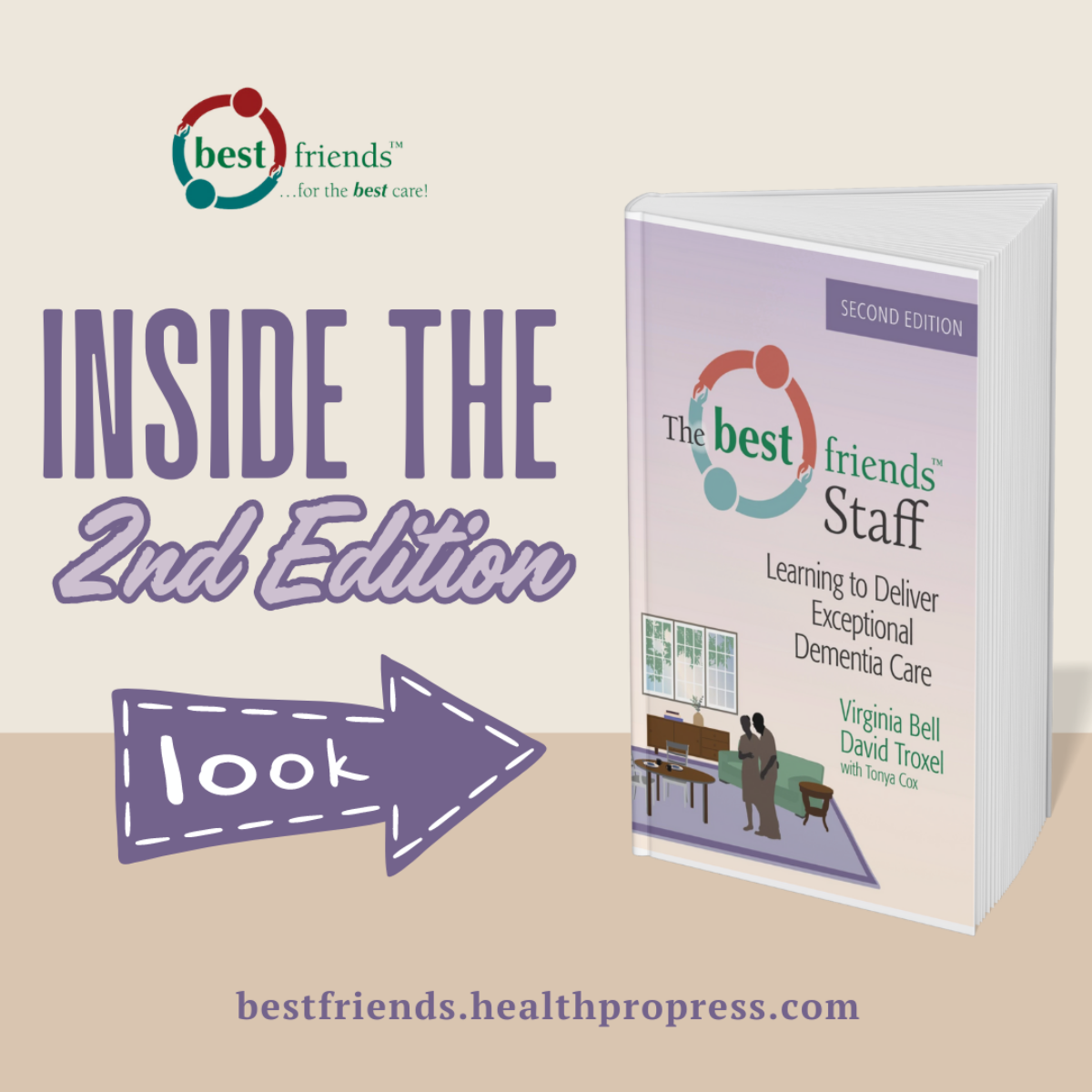
Inside The Best Friends Staff, Second Edition
The second edition of the bestselling staff training tool from the Best Friends™ product suite is packed with resources to help staff in dementia care gain the required skills and confidence to deliver optimal care and succeed in this challenging caregiver role. Here, we break down the contents of the book so that you can see just how it can work for you!
Part I discusses the foundations of effective training and provides an overview of the Best Friends approach.
Reinvent and Energize Training
Chapter 1 describes ways to reinvent and energize boring and ineffectual training programs. Currently, many providers focus on what is taught versus how it is taught. Both are important, as this chapter argues.
Overview of the Approach
Chapter 2 gives an overview of the Best Friends approach, including the Dementia Bill of Rights and a more detailed introduction to the concept of caregiving Knack.
The six chapters in Part II cover training on specific topics related to dementia care, including healthcare and medical basics, empathy and understanding, Life Stories, and more. This section discusses core Best Friends concepts and offers dozens of ideas for creatively teaching staff these principles.
The Basics of Dementia
Chapter 3 covers the basics of Alzheimer’s disease and other dementia that should be included in training programs. It does not discuss current dementia care research in detail because online information is readily available and updated more frequently than the contents of a book.
Empathy and Understanding
Chapter 4 takes a more philosophical turn, focusing on ways to practice greater empathy and understanding for people with dementia. There is an age-old argument about whether these feelings can be taught. We believe they can. For example, many staff members (and families) have been shaken by the impact of Virtual Dementia Tours®, realizing past mistakes and committing to doing better. This chapter in particular helps staff develop caregiving Knack.
The Life Story
Chapter 5 covers a foundational piece of the Best Friends approach and contemporary dementia care—the importance of the Life Story to good care. Frustratingly, programs still stumble in their collection and use of social histories. Programs rarely provide enough training to staff on how to utilize this information to encourage participation in activities, enhance communication, or skillfully redirect the person when needed. This chapter will help you succeed.
Communication
Chapter 6 covers a topic that is one of our favorites to teach: communication. Although dementia damages the language centers of the brain, staff can learn easy strategies to improve communication (for example, learning not to argue or correct). This chapter also describes the importance of nonverbal communication, including the power of smiles and affection.
Behaviors
Chapter 7 tackles the always-important topic of dementia-related behavior. We embrace the contemporary view that behavior communicates a message. When staff learn to be behavioral “detectives,” they can often decipher clues about behaviors, address them with a constructive (and less blaming) approach, and prevent them altogether.
The Impact on Family
Chapter 8 talks about the impact of dementia on family care partners, a topic that is not discussed enough with staff. Without education, staff will sometimes fall into negative thinking regarding families, focusing on the family members who complain about care or who don’t visit enough. Staff should be encouraged to develop empathy and understanding for the physical, emotional, and financial stressors that family members often experience.
Activities
Chapter 9 explains the importance of activity programming and engagement. When families visit your program, do they see lively interactions and events? Are the calendars creative and interesting? The chapter helps staff understand how activities are an essential part of their jobs. Even a few moments spent on what we call “30-second activities” can help fight isolation and loneliness.
Becoming a Champion for Change
Part III describes how to become a champion for change. It provides readers with the steps to develop a personal and professional game plan for successful dementia care programs. We also share some additional personal reflections about the importance, meaning, and rewards of a career dedicated to helping people with dementia live their best lives.
A Call to Action
Chapter 10 provides a call to action, summarizing nine steps for creating an excellent dementia care program based on the Best Friends approach. The chapter provides concrete guidance on developing a program with engaged staff, good training, vibrant activities, and relationship-centered care.
The Appendices provide a description of the Best Friends Master Training Program offered by Health Professions Press, a list of people and programs mentioned in this book, and recommended resources.
Chapters 1 through 9 contain helpful Tools to be used as training exercises and handouts. Many of these Tools can be taught directly from the book or copied. Selected Tools can be downloaded from healthpropress.com.
Real People and Places
One notable feature of the Best Friends books is our inclusion of people and places that are willing to share their stories and best practices regarding dementia care. Many of these perspectives are from Best Friends Master Trainers. The book features numerous professionals and programs providing exemplary care. They lend the book authenticity, allow the reader to benefit from the expertise of others, and provide networking opportunities for professionals interested in culture change.
We have also included the voices of people with dementia to gain and share their insights regarding culture change, staff education, and staff training. One of our first readers was the late Ruth McReynolds, a person living with Alzheimer’s disease in the 1990s. Ruth took our original book, The Best Friends Approach to Alzheimer’s Care, with her when she moved into Villa Alamar Memory Care (Santa Barbara, CA). She would recommend the book to staff, saying, “This book helps me accept what I have. You should read it. I even know one of the writers. He’s a friend.” How lovely that one of our very first “staff educators” was Ruth, a champion of excellent care delivered by a well-trained team of staff members who put friendship front and center.
Read the book!
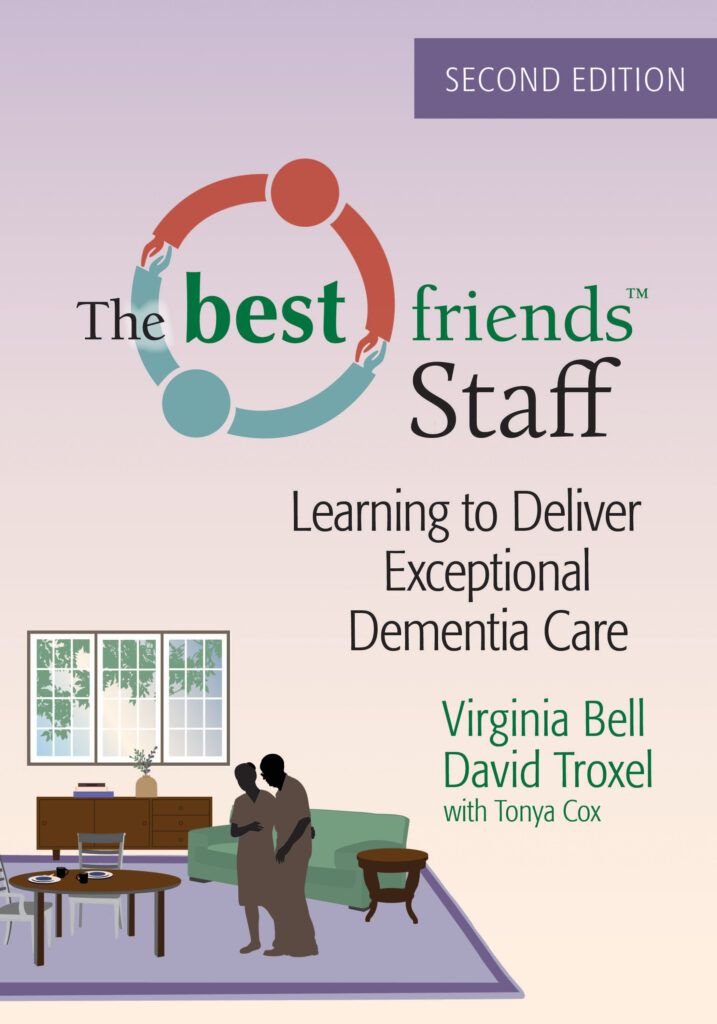
To get started delivering optimal memory care using the Best Friends approach, get your copy of The Best Friends Staff: Learning to Deliver Exceptional Memory Care, Second Edition by Virginia Bell, David Troxel, and Tonya Cox today! Be sure to also visit the Best Friends website to learn more about our array of Best Friends products and support, including introductory and advanced training!
This post was adapted from The Best Friends Staff: Learning to Deliver Exceptional Dementia Care, Second Edition by Virginia Bell, M.S.W., David Troxel, M.P.H, and Tonya Cox, M.S.W., LNHA. Copyright © 2024 by Health Professions Press, an imprint of Paul H. Brookes Publishing Co., Inc. All rights reserved.

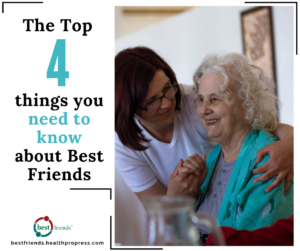
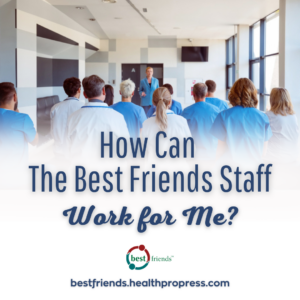
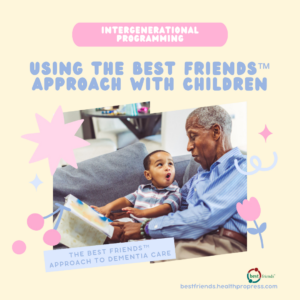

Add comment